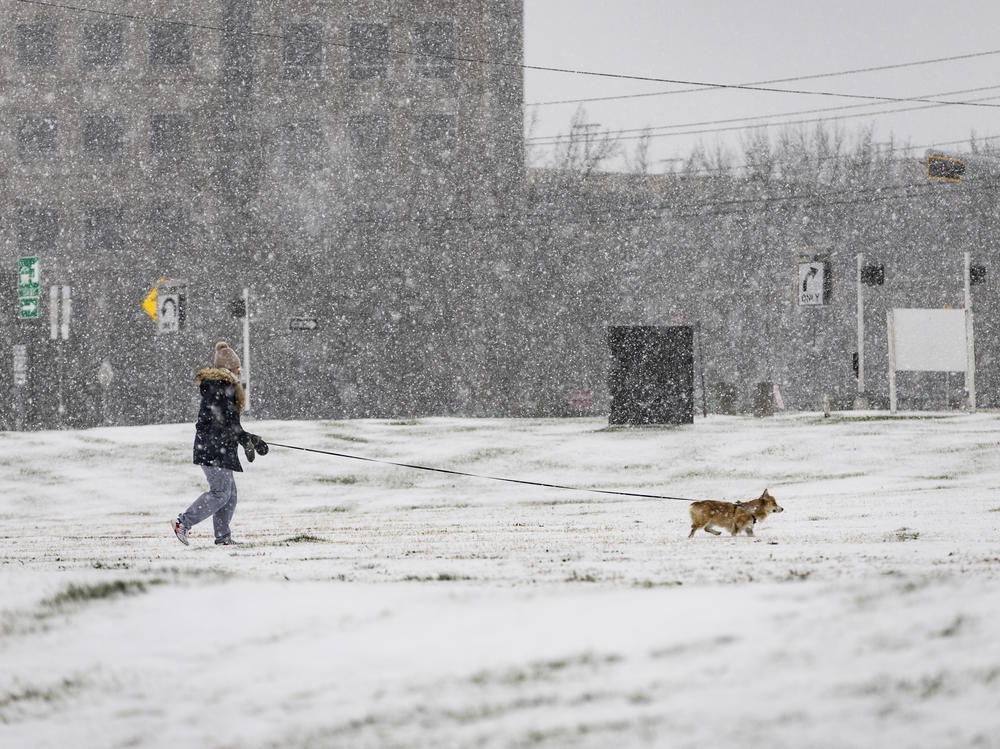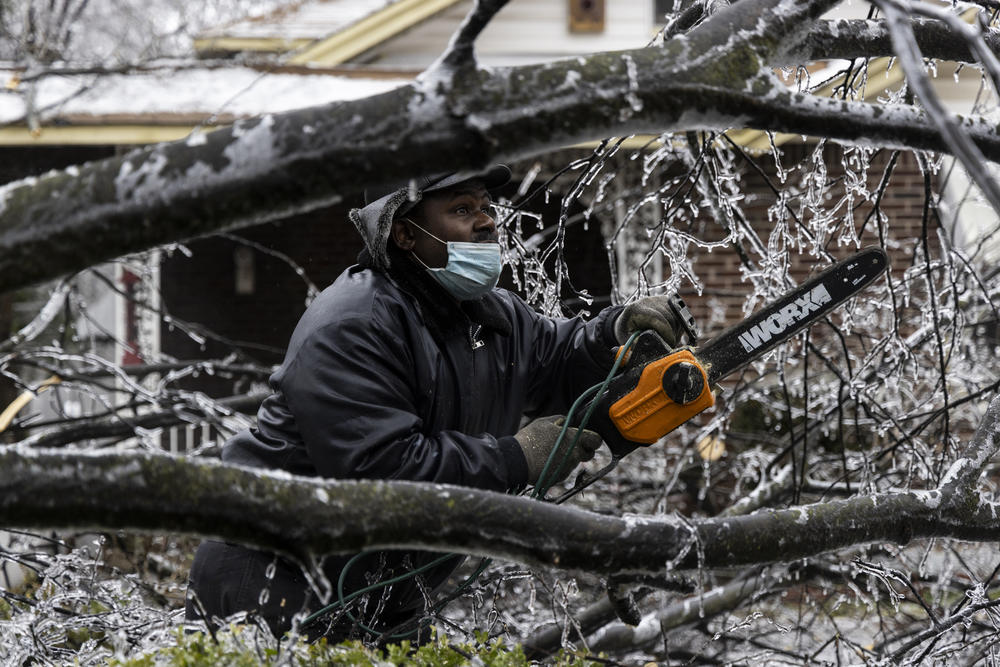Section Branding
Header Content
Winter storm brings more snow and ice as it moves through the Northeast
Primary Content
Updated February 4, 2022 at 2:13 PM ET
Cold temperatures and blistering winds are expected to persist in much of the Midwest and along the East Coast through the weekend, as people continue to grapple with power outages and travel disruptions.
More than 3,000 flights into, out of and within the U.S. have been canceled on Friday and another 2,000 delayed, according to travel tracking site Flight Aware.
More snow and ice are forecast into Saturday morning, according to the National Weather Service, with the eastern parts of Maine predicted to be hit the hardest with an excess of six inches of snow. New Hampshire, Vermont, and some parts of New York are also expected to get several inches of snowfall.
Ice has been a continuing problem for numerous states and difficult road conditions are expected to continue through Saturday morning in some areas. Parts of New York, Pennsylvania, Massachusetts and Connecticut are expected to get the worst of it, with ice accumulation ranging from a quarter to half an inch, according to graphics shared by the NWS.
"Don't take a risk. Stay home if you can today," New York Gov. Kathy Hochul urged residents Friday.
From Texas to Ohio, the storm — on the heels of a storm last week that plagued the Northeast — had already knocked out power to more than 350,000 properties on Thursday alone, according to The Associated Press. In Tennessee, snow and ice led to the loss of power for more than 125,000 customers by Friday morning, mostly concentrated in the Memphis area.
Christopher Blank, news director with Memphis member station WKNO, told NPR's Morning Edition that the abundance of trees in the city was a contributing factor to how so many were left without electricity amid icy temperatures. Many ended up "encased" in ice and were felled by the strong winds, Blank said. It's part of a recent trend that's seen snowy weather worsening in the area in recent years.
"Two years in a row now, people are starting to wonder if this could be the new normal with climate change," Blank said.
Ohio is among the hardest-hit states. To date, the number of properties without power is close to 85,000, The Associated Press reported.
Multiple counties were placed under snow emergencies this week, meaning that road usage and other activities have been greatly restricted and conditions are generally hazardous. And at least eight counties have been placed under a level 3 snow emergency status, with all roads closed for non-emergency use, according to local outlet WKYC.
"No one should be on the roadway unless it is absolutely essential to travel," a statement from the Erie County Sheriff's Office reads, citing "extremely hazardous" conditions. "Those operating vehicles on the roadway for non-emergency reasons may be subject to arrest."
Heavy snowfall and power outages in Texas echo evoke memories of last year, when a massive storm left millions in the state without power for days. Hundreds died and many are still struggling to recover. So far, however, the state's power grid is "performing well," Gov. Greg Abbott confirmed on Thursday.
Copyright 2022 NPR. To see more, visit https://www.npr.org.


